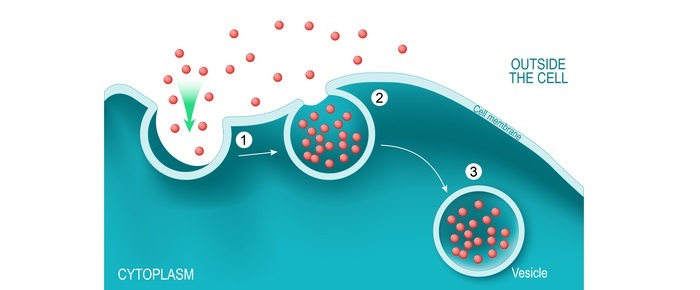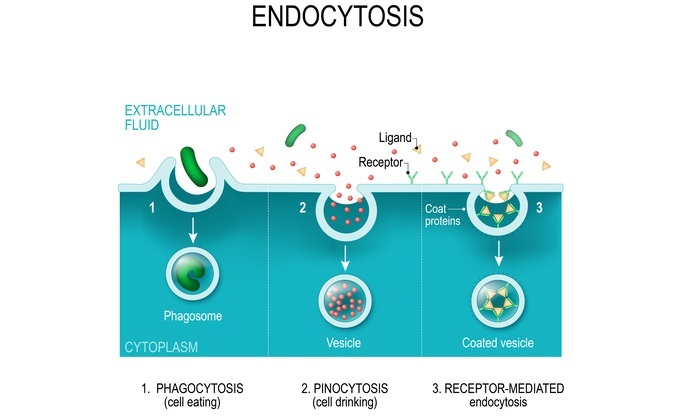
 Data Structure
Data Structure Networking
Networking RDBMS
RDBMS Operating System
Operating System Java
Java MS Excel
MS Excel iOS
iOS HTML
HTML CSS
CSS Android
Android Python
Python C Programming
C Programming C++
C++ C#
C# MongoDB
MongoDB MySQL
MySQL Javascript
Javascript PHP
PHP
- Selected Reading
- UPSC IAS Exams Notes
- Developer's Best Practices
- Questions and Answers
- Effective Resume Writing
- HR Interview Questions
- Computer Glossary
- Who is Who
Endosomes Types and Functions
Introduction
Endosomes are essential components of the eukaryotic cell's endocytic pathway. They are dynamic membrane-bound organelles that are responsible for sorting and transporting materials from the cell surface to various intracellular compartments.
Endosomes are classified into several types, each with specific functions and characteristics.
In this article, we will discuss the various types of endosomes and their functions.

Types of Endosomes
Early Endosomes
Early endosomes are the first endocytic compartments to which internalized materials are delivered. They are characterized by the presence of early endosome antigen 1 (EEA1) and Rab5 GTPase.
Early endosomes are responsible for sorting cargo that is destined for recycling or degradation. Cargo that is destined for recycling is sorted into tubular structures that are transported back to the cell surface.
Cargo that is destined for degradation is sorted into multivesicular bodies (MVBs) for delivery to lysosomes.
Late Endosomes
Late endosomes are characterized by the presence of Rab7 GTPase and lysosomal-associated membrane proteins (LAMPs). They are responsible for the transport of material from early endosomes to lysosomes for degradation.
Late endosomes are also known as MVBs because they contain intraluminal vesicles (ILVs). These ILVs are formed by the invagination of the endosomal membrane and contain material that is destined for degradation.

Recycling Endosomes
Recycling endosomes are responsible for sorting and transporting material that is destined for the cell surface. They are characterized by the presence of Rab11 GTPase and contain cargo that has been sorted from early endosomes.
Recycling endosomes are responsible for recycling receptors and other proteins that are involved in cell signaling, membrane trafficking, and nutrient uptake.
Trans-Golgi Network (TGN) Endosomes
TGN endosomes are located in close proximity to the TGN and are responsible for sorting and transporting cargo to various destinations. They are characterized by the presence of TGN38 and syntaxin-6.
TGN endosomes are responsible for sorting and transporting newly synthesized proteins from the TGN to their final destination.
Functions of Endosomes
Receptor Recycling
Endosomes are responsible for recycling receptors that are involved in cell signaling and nutrient uptake. After ligand binding, receptors are internalized and delivered to early endosomes.
From there, they are sorted and transported to recycling endosomes, where they are sorted for transport back to the cell surface. This process is essential for maintaining the proper levels of receptors on the cell surface.
Nutrient Uptake
Endosomes are involved in the uptake of nutrients from the extracellular environment. Nutrient receptors are internalized and delivered to early endosomes, where they are sorted and transported to recycling endosomes.
From there, they are sorted and transported back to the cell surface. This process is essential for the uptake of essential nutrients such as iron and cholesterol.
Protein Degradation
Endosomes are responsible for the degradation of proteins that are no longer needed by the cell. Material that is destined for degradation is sorted into MVBs in early endosomes. From there, it is transported to late endosomes for delivery to lysosomes.
Lysosomes contain hydrolytic enzymes that break down the material into its component parts, which can be recycled by the cell.
Transport of Material between Compartments
Endosomes are responsible for the transport of material between intracellular compartments. Cargo that is sorted into TGN endosomes is transported to its final destination.
Cargo that is sorted into late endosomes is transported to lysosomes for degradation. This process is essential for maintaining the proper levels of material in each compartment and ensuring that materials are delivered to their proper destinations.
Unknown Facts
Here are a few facts listed -
Endosomes are involved in the regulation of immune responses.
They play a role in the presentation of antigens to T cells, which is essential for the activation of the immune system.
-
The size and shape of endosomes can vary depending on the type of cargo they contain.
For example, early endosomes that contain small molecules may appear as small spherical structures, while early endosomes that contain larger cargo may appear as larger, more irregularly shaped structures.
Endosomes are involved in the transport of material between cells. In certain cell types, endosomes can form protrusions known as tunneling nanotubes, which allow for the transfer of material between cells.
FAQs
Q1. What is the role of endosomes in membrane trafficking?
Ans. Endosomes are essential for membrane trafficking in eukaryotic cells. They are responsible for the uptake and transport of material from the cell surface to various intracellular compartments. Endosomes sort cargo that is destined for recycling or degradation and transport it to the appropriate location. Additionally, endosomes are involved in the transport of material between intracellular compartments, ensuring that materials are delivered to their proper destinations.
Q2. How are endosomes different from lysosomes?
Ans. Endosomes and lysosomes are both membrane-bound organelles involved in intracellular trafficking. Endosomes are responsible for sorting and transporting material from the cell surface to various intracellular compartments. Lysosomes are responsible for the degradation of material that is no longer needed by the cell. Endosomes can be further subdivided into early and late endosomes, while lysosomes are a distinct organelle.
Q3. How do endosomes and lysosomes work together?
Ans. Endosomes and lysosomes work together to ensure that materials are properly sorted, transported, and degraded within the cell. Material that is sorted into MVBs in early endosomes is transported to late endosomes, where it is delivered to lysosomes for degradation. Lysosomes contain hydrolytic enzymes that break down the material into its component parts, which can be recycled by the cell. Endosomes are also responsible for the transport of material between intracellular compartments, ensuring that materials are delivered to their proper destinations.

